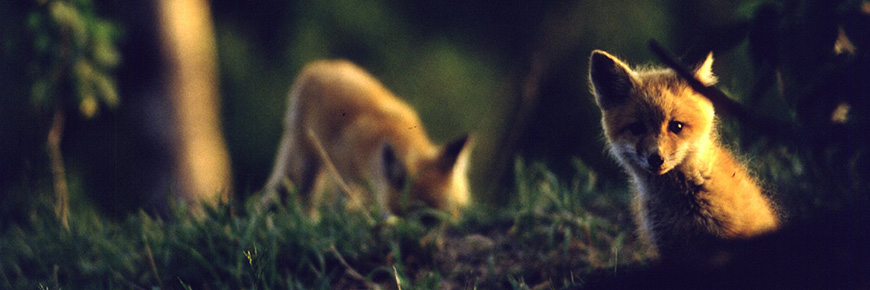
Red Fox
Riding Mountain National Park
The red fox (Vulpes vulpes) is known for its rusty orange-red fur and long bushy tail. Red foxes are one of Canada’s most widespread mammals. They are opportunistic omnivores, meaning they are able to survive and thrive in many different habitats including urban centres, agricultural areas, and the edges of wooded areas or forests. Red foxes are nocturnal, but it is not uncommon to see them during the day. Their diet is about as flexible as their habitat preference. They primarily prey on small mammals such as voles, mice, rabbits, and other small rodents, but they also consume plants, berries, and insects. Because rodents are hosts for Lyme disease, foxes reduce the chances of transmission by eliminating these rodents from the ecosystem.
The female fox or vixen will have babies (also known as kits or pups) each spring between March and May. The litter size ranges from 1-13 kits. The lifespan of this species is 2-4 years.
Red foxes are highly vocal and make many different sounds. If you are lying in bed at night and hear a noise that resembles a woman screaming or a baby crying it is most likely a fox. Their most common vocalizations include a series of high pitched barks or a scream like howl. They also whine, and even make a “gekkering” noise which is a guttural chattering with the occasional yelp or howl. They make this sound when they are playing or fighting. Many people will report hearing noises from an animal that sounds distressed, but in many cases it is just a fox making its normal vocalizations.
The population trend of red foxes is stable. Threats are highly localized and may include habitat degradation and fragmentation, exploitation, and direct and indirect persecution.
- Date modified :